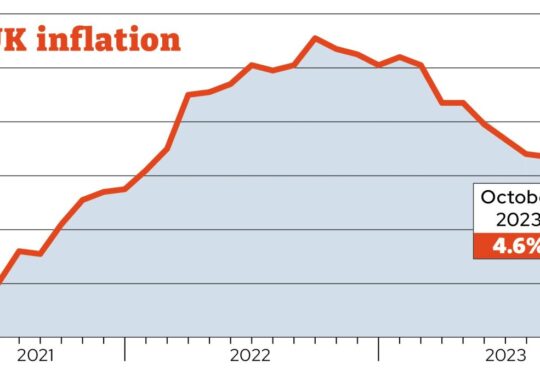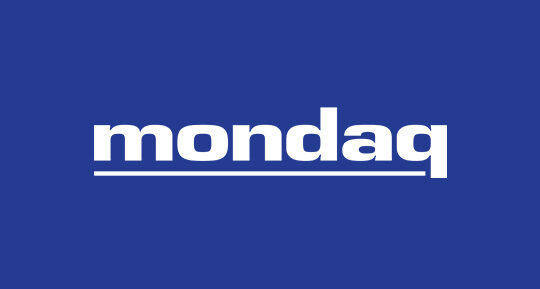
Key points
- A SEP IRA allows self-employed workers to make tax-deductible contributions.
- Any small-business owner or self-employed worker can open a SEP IRA.
- You can contribute up to the lesser of 25% of your compensation or $66,000 per year.
While there are many joys and freedoms to self-employment, there are also some stressful responsibilities. To name one, planning your own retirement.
More than 10% of workers in the U.S. are self-employed, according to Pew Research Center. For those roughly 16 million people, saving for retirement can be especially challenging. After all, you can’t simply sign up for your employer’s ready-made retirement savings plan and have contributions taken out of each paycheck automatically.
Fortunately, you can still set aside money in a tax-advantaged account called a simplified employee pension plan, known as a SEP IRA. This account might just be the tool you need to start saving for retirement.
What is a SEP IRA? And how does it work?
A SEP IRA is a tax-advantaged account that allows small-business owners to save for their own and their employees’ retirements.
When you fund a SEP IRA, your contributions are tax-deductible. You can invest the money in your account in stocks, bonds, mutual funds and more, and it grows tax-deferred. That means you’ll owe income taxes on withdrawals during retirement.
SEP IRAs have many of the same rules as other retirement plans, such as 401(k)s and traditional IRAs. For example, if you withdraw money before you turn 59½, a 10% additional tax generally applies. You also have to start taking required minimum distributions when you turn 73. If you don’t, you may have to pay an excise tax on the amount that wasn’t distributed.
Who is eligible for a SEP IRA?
Any business owner can open and contribute to a SEP IRA, whether you run a business with employees or are a self-employed freelancer or gig worker.
If you have employees, they can also participate in your business’s SEP IRA. You must include your employees if they:
- Are at least 21 years of age.
- Have worked for your business for at least three of the past five years.
- Have received at least $750 in compensation from your business in 2023.
Tip: You can choose to include employees who don’t meet the requirements for SEP IRA accounts.
SEP IRA contribution limits
The SEP IRA rules allow for generous contributions. The maximum amount you can contribute to your account each year is the lesser of:
- 25% of your compensation.
- $66,000 in 2022, up from $61,000 in 2022 and $58,000 in 2021.
These limits apply whether you are contributing to your own SEP IRA as a self-employed individual or have employees to contribute on behalf of.
Keep in mind that if you have employees and contribute to a SEP IRA on your own behalf, you must contribute the same percentage to each employee’s account.
Say you’re self-employed and have an income of $250,000. You contribute the maximum to your SEP IRA, which is $62,500, or 25% of your compensation. Now suppose your employee earns $100,000. Because you contributed 25% of your income to your SEP IRA, you must contribute 25% of your employee’s income, or $25,000, to their SEP IRA as well.
For purposes of determining SEP IRA contributions, your compensation as a self-employed person isn’t all the money your business earns. It is the amount left after deducting half your self-employment tax and contributions to your own SEP IRA.
One difference between a SEP IRA and some other tax-advantaged retirement accounts is that SEP IRAs don’t allow catch-up contributions for savers 50 and older.
Another is that all SEP IRA contributions vest immediately, meaning the employee fully owns them. You can’t set up an extended vesting schedule like you can with other employer-sponsored plans.
How to set up a SEP IRA
Setting up a SEP IRA is a simple process that usually takes just a few minutes.
You’ll have to complete IRS Form 5305-SEP. You don’t have to file this form with the IRS. Instead, keep a copy and provide a copy to any plan participant.
If you’re opening a SEP IRA with a financial firm, it will complete the paperwork for you.
“Most investment firms, financial planners and custodians (Vanguard, Fidelity, etc.) have forms available and can help you set up a SEP IRA,” says Jordan Taylor, an independent financial advisor at Core Planning.
Log in to any mutual fund company or online broker like Vanguard or Fidelity or a robo-advisor like Betterment. Once you indicate that you want to open a SEP IRA, the site will guide you through the process.
If you want to include employees in your SEP IRA, you’ll have to open an account for each one or have them open their own. Each employee’s account can be set up with a financial institution of their choosing.
If you’re setting up a SEP IRA for yourself alone, it will operate like any other investment account, allowing you to log in to make contributions or set up automatic recurring contributions.
Pros and cons of a SEP IRA
SEP IRAs have some serious benefits, even compared to other tax-advantaged retirement accounts. But there are also some downsides to be aware of.
Pros
- SEP IRAs are easy to set up and operate.
- Contributions are tax-deductible, which means a lower tax bill any year you contribute. The funds in the account grow tax-deferred, and you won’t owe income taxes until you withdraw money in retirement.
- The amount you can contribute to a SEP IRA may be higher than the amount you can contribute to a traditional IRA, Roth IRA or 401(k) plan.
- SEP IRAs are flexible. You can contribute in years when you have good cash flow but pause contributions during tough times.
Cons
- If you have employees, you’ll have to make contributions to each of their accounts proportional to your contribution to your own account.
- Like 401(k) plans and traditional IRAs, SEP IRAs have required minimum distributions starting at age 73.
- There is no Roth option with a SEP IRA, so you can’t take advantage of this alternative approach to tax savings in which contributions are made with post-tax dollars and retirement withdrawals are tax-free.
SEP IRA alternatives
A SEP IRA is one of many accounts available to help business owners save for retirement. You can use the following tax-advantaged accounts to save for retirement, either in addition to or instead of a SEP IRA.
1. Solo 401(k)
A solo 401(k) is another popular retirement plan for self-employed workers and business owners. This account is like a 401(k) you might be offered through an employer, but it’s for business owners with no employees — hence the “solo” part.
With a solo 401(k), you can contribute up to $22,500 as an employee and then as an employer contribute up to 25% of your net self-employment income, for a total contribution limit of $66,000 in 2023. That’s the same as the contribution limit for a SEP IRA.
But a solo 401(k) has a couple of major advantages over a SEP IRA:
- You can make an additional catch-up contribution of $7,500 per year if you’re 50 or older.
- You have the choice of making pretax contributions to a solo traditional 401(k) and paying income taxes on withdrawals or putting post-tax dollars into a solo Roth 401(k) and enjoying tax-free income in retirement.
Ultimately, a solo 401(k) is a better option for many business owners, especially those who want to take advantage of the catch-up contribution or the Roth option.
Plus, if you’ve structured your business as an S corporation, a solo 401(k) can make more sense.
“A SEP requires that your contributions are based only on the self-employed portion of your income, but S corp owners split their income between self-employed earnings and business profits,” says Graham Miller, a certified financial planner and president of Wiegand Financial Group. “If you like to keep your self-employed earnings low for tax purposes — consult your accountant — then you would need to implement a solo 401(k) rather than a SEP if you wanted to hit the max contribution amount.”
A solo 401(k) isn’t an appropriate option if you have employees — or hope to. Once you hire workers, you won’t be able to contribute to your solo 401(k) any longer. A SEP IRA would be a better choice.
Another downside to these accounts is that they’re more complicated to set up. Like with a SEP IRA, your broker can help you with the paperwork. There may also be more forms to fill out, and you may be responsible for annual filings.
2. Traditional IRA
Anyone with earned income can fund a traditional IRA. For a self-employed worker, the tax features are similar to those of the SEP IRA. You can deduct your contributions on your taxes, the funds in the account grow tax-deferred and you’ll owe income taxes on your withdrawals during retirement.
The one major downside of a traditional IRA — and the reason a SEP IRA may be a better choice — is that the annual contribution limit is low: only $6,500 in 2023, or $7,500 if you are 50 or older.
3. Roth IRA
Just like with a traditional IRA, you can contribute up to $6,500 to a Roth IRA in 2023, or $7,500 if you’re 50 or older. The major difference between a Roth IRA and a traditional IRA or SEP IRA is when you enjoy the biggest tax advantage:
- In the case of a SEP IRA or traditional IRA, you get a tax benefit the year you make the contribution because it is tax-deductible. The money grows tax-deferred, and you pay taxes on your withdrawals during retirement.
- With a Roth IRA, you contribute after-tax dollars, meaning there’s no upfront tax benefit. But the money grows tax-free, and you can withdraw it tax-free during retirement.
A Roth IRA can be an attractive addition to a SEP IRA, thanks to its unique tax advantage. However, you may not want to invest only in a Roth IRA due to its low contribution limit.
Can you invest in more than one retirement account?
The short answer is yes, you can contribute to more than one retirement account. For example, you might have a 401(k) at your day job and use a SEP IRA to set aside money from the side hustle you run.
However, there are some special rules in place.
First, if you are an employee of a company with a SEP IRA, then your employer’s contributions to your retirement account won’t limit your ability to contribute to other retirement accounts.
As an employee with a SEP IRA, you can make contributions to a Roth IRA, a traditional IRA, a 401(k) or any other available retirement plan.
The rules get a bit cloudier if you’re self-employed and contribute to a SEP IRA for your business.
As a business owner, you can’t offer yourself both a SEP IRA and a 401(k) and make the maximum contribution to each account. Your total contributions are limited to $66,000.
But if you have a SEP IRA in your own business and are offered a 401(k) through another business you work for, you’ll be able to contribute up to the maximum to each account. Additionally, a self-employed person with a SEP IRA may contribute to a traditional or Roth IRA, up to the contribution limits for those plans.
Frequently asked questions (FAQs)
The amount you can contribute to a SEP IRA depends on your annual income. In 2023, you’re allowed to contribute the lesser of 25% of your compensation or $66,000.
If you’re self-employed, you’re eligible to set up your own SEP IRA. If your employer offers a SEP IRA, you’re eligible to contribute if you’re at least 21 years old, have worked for the employer for three of the past five years and received at least $750 in 2023.






